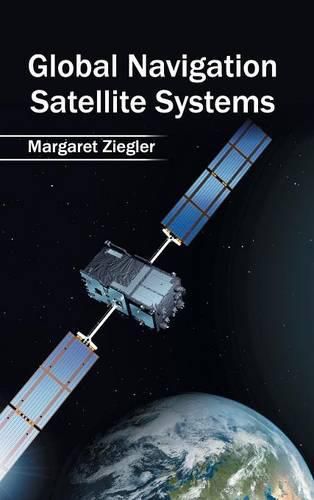Readings Newsletter
Become a Readings Member to make your shopping experience even easier.
Sign in or sign up for free!
You’re not far away from qualifying for FREE standard shipping within Australia
You’ve qualified for FREE standard shipping within Australia
The cart is loading…






This title is printed to order. This book may have been self-published. If so, we cannot guarantee the quality of the content. In the main most books will have gone through the editing process however some may not. We therefore suggest that you be aware of this before ordering this book. If in doubt check either the author or publisher’s details as we are unable to accept any returns unless they are faulty. Please contact us if you have any questions.
This book presents a comprehensive overview on the historical advances and current state of global navigation satellite systems. Nowadays, satellite navigation presents handy substitutes for terrestrial and stellar navigation techniques that are not only universal and easy to operate but also available day and night. The radio navigation technology, which first emerged in the 1930s and advanced in the 1940s, did not fully take off until the late 1960s and 1970s when the first navigation satellites by the US Naval and Air Forces were launched, resulting in the beginning of the NAVSTAR GPS program. The end user navigation equipment, initially bulky and costly, did not fully develop until the microprocessor became viable during the late 1970s. Currently, three major alternative global navigation satellite systems are fully or partially functional: the European Union Galileo, the Russian GLONASS, and the Chinese BeiDou. The question of uncertainty of the future of this technology still looms. Possibly, a network of global satellite navigation techniques is the ultimate solution, with rise in satellite coverage and advanced accuracy, integrity and authenticity, as these systems advance further. End user equipment will consistently advance in compactness, efficiency and cost-effectiveness. However, in various aspects, satellite navigation systems have derived much from the old-time stellar navigation system, having kept humankind to seek the skies for help.
$9.00 standard shipping within Australia
FREE standard shipping within Australia for orders over $100.00
Express & International shipping calculated at checkout
This title is printed to order. This book may have been self-published. If so, we cannot guarantee the quality of the content. In the main most books will have gone through the editing process however some may not. We therefore suggest that you be aware of this before ordering this book. If in doubt check either the author or publisher’s details as we are unable to accept any returns unless they are faulty. Please contact us if you have any questions.
This book presents a comprehensive overview on the historical advances and current state of global navigation satellite systems. Nowadays, satellite navigation presents handy substitutes for terrestrial and stellar navigation techniques that are not only universal and easy to operate but also available day and night. The radio navigation technology, which first emerged in the 1930s and advanced in the 1940s, did not fully take off until the late 1960s and 1970s when the first navigation satellites by the US Naval and Air Forces were launched, resulting in the beginning of the NAVSTAR GPS program. The end user navigation equipment, initially bulky and costly, did not fully develop until the microprocessor became viable during the late 1970s. Currently, three major alternative global navigation satellite systems are fully or partially functional: the European Union Galileo, the Russian GLONASS, and the Chinese BeiDou. The question of uncertainty of the future of this technology still looms. Possibly, a network of global satellite navigation techniques is the ultimate solution, with rise in satellite coverage and advanced accuracy, integrity and authenticity, as these systems advance further. End user equipment will consistently advance in compactness, efficiency and cost-effectiveness. However, in various aspects, satellite navigation systems have derived much from the old-time stellar navigation system, having kept humankind to seek the skies for help.